We’re All Related (and why it matters)
It’s ti-i-me!
Time for RootsTech, that is (March 6-8, 2025). And time for my favorite feature, Relatives at RootsTech.
The largest annual genealogy conference in the world is a hybrid event. If you register for the FREE virtual portion of the conference you will get a different experience, of course, than if you go in person. But there are benefits in registering, even if you are only semi-interested in your family history, and even if you can’t attend on those dates. Like what? Like access to recorded educational sessions from previous years, and access to Relatives at RootsTech.
 What is “Relatives at RootsTech”?
What is “Relatives at RootsTech”?
It’s a tool that shows how you are related to others who are also registered for the conference. The first time I saw that I was related to tens of thousands of other conference goers I thought, “Well, that can’t be right!” But when I realized how many people attend RootsTech (millions, if you include virtually), and how many ancestors I have (thousands) and how many descendants they must have by now, my doubts vanished.
Why do I like Relatives at RootsTech so much?
- It reminds me that everyone is related. While I may not be related to YOU, I very well also might be!
- It’s fun to be able say you’re related to a client, or friend, or colleague, and also to know exactly HOW you’re related.
- It can benefit your research and enrich your life to connect with a distant cousin who is researching common ancestors.
- Did I mention it’s free?
Can I trust Relatives at RootsTech?
No. It’s not a matter of trust!
FamilySearch is a crowd-sourced world tree, so it’s subject to errors introduced by users who are not experienced genealogists (and users who make mistakes). But it also includes a plethora of free resources and many wonderfully-documented ancestor profiles. The Relatives at RootsTech tool provides the path by which you are supposedly connected, based on input from you and other researchers. It’s up to each of us to analyze the information we encounter, and to make corrections (or to at least initiate discussions with other researchers) if we are in possession of more, or better, evidence.
 How to use Relatives at RootsTech:
How to use Relatives at RootsTech:
- First, register for RootsTech. There is no cost for the virtual part of the conference, but you will need to create an also-free FamilySearch account to get started.
- Look for the Relatives at RootsTech feature during the month before and the month after the conference.
- If you don’t see that you are related to anyone, add a couple more generations to your tree (first yourself, then your parents, then your grandparents, and so on) until it connects with the larger world tree.
- If you don’t see that you are related to anyone you know, ask someone you do know to also register for the conference so you can see if, and how, you are related.
- If you are related, but your common ancestor is 10 generations back and not all of the names look familiar, use the provided path as clues to further your research. Document each step along the way on both sides before resting assured it is a legitimate path to a common ancestor. I’ve had some good luck with the paths I’ve been presented, but I am always wary of each step (branch, leaf) until I see (or find) sufficient documentation for each one. I don’t want to end up climbing someone else’s family tree!
- If you don’t have time to do the research now, take a screenshot to refer to later. (Check the screenshot to be sure it is legible.)
What if Relatives at RootsTech isn’t available?
The reason Relatives at RootsTech is exciting is because it’s not available all year round. It’s only available the month before, and the month after the conference. This is the only time you can find out how you’re related to living persons, since living persons are not searchable on FamilySearch (or other genealogy platforms) for privacy’s sake.
What is available all year, though, is a page called Famous Relatives. In the same way you saw (and proved) you were related to a friend, acquaintance, or distant cousin, you can see (and prove) whether or not you are related to a famous person in one of the following categories: Leaders, Inventors and Scientists, Entertainers and Artists, Trailblazers, and Athletes.
So, even if you aren’t related to ME, you are almost certainly related to somebody famous.
Why Does it Matter?
Is it important to have famous ancestors? No, of course not! It’s mostly just fun.
As I wrote in my introduction to the Albuquerque Genealogical Society, whose board of directors I joined last month, “Most of my ancestors immigrated to America from the British Isles in the 1600s. The most intriguing ones (so far) include Quakers, loyalists, slaveholders, and that one 3rd great-grandfather who went to the gold rush and was never heard from again.”
Most of my ancestors were unsung pioneers and farmers (plus a few drunks and rent-jumpers). Some I’ve traced back 12 generations, while others left so few records of themselves that I’m stuck only a few generations back in time searching for them.
I think it’s important in these divisive political times to focus on what we all have in common, not what separates us.
If we go back far enough, we are all descended from so many ancestors that finding common ground is inevitable. If I find that I am descended from royalty, or related to famous people, the point is not that I’m special. The point is that we are ALL special. Even those ancestors who left few records are special. People who think they aren’t related to royalty, just don’t know yet that they’re descended from both royalty and their servants. And, if you live in the United States, and you aren’t a Native American, you are an immigrant no matter how long ago your family came here.
 Related blog posts and Resources:
Related blog posts and Resources:
- How and when to find a common ancestor (I solved a family mystery and determined my relationship to a historical figure by finding our common ancestor. And you can too!)
- What the heck is a second cousin once removed? (Even genealogists need charts to figure out cousin relationships.)
- Black Lives Matter in Genealogy Too (Aka Slaveholders in the Family)
- Are we all descended from royalty? (Spoiler alert: Most of us are distantly related to rulers such as Charlemagne, Genghis Kahn, and other historical figures with an abundance of descendants.)
- Witches in the Family (Included here for the sections called “How do I know we’re really related, though?”, “Do the math”, and “My ancestors are all immigrants, and yours probably are too”.)
- Genealogy Resource Roundup (These are the resources I use most often.)
Are you registered for RootsTech?
Are WE related? Who else are you related to?
Please leave a comment below!
______________________________________________________
- Hazel Thornton is an author, genealogist, and retired home and office organizer.
- Book: Hung Jury: The Diary of a Menendez Juror
- Book: What’s a Photo Without the Story? How to Create Your Family Legacy
- Book: Go With the Flow! The Clutter Flow Chart Workbook
- Feel free to link directly to this post! Click here to ask about other uses.
- Copyright 2025 by Hazel Thornton, Organized for Life and Beyond
______________________________________________________________________________
Share this:



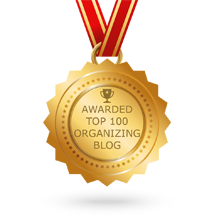
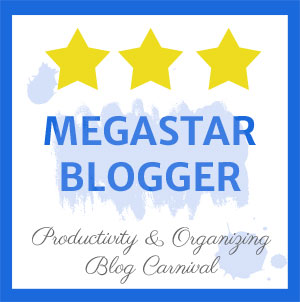
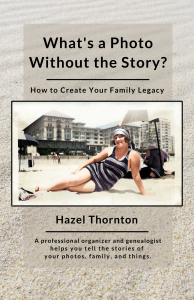
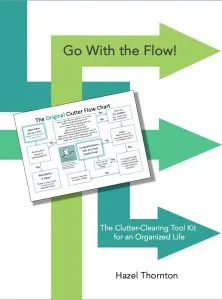
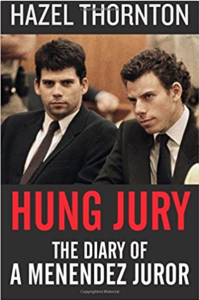
Theres no one better at this ancestry stuff than you, Hazel! It sounds like the mystery and connection to your ancestors is exciting for you.
Maybe one day it will be for me too. 🙂
Thanks, Elva! 🙂
I love this: “I think it’s important in these divisive political times to focus on what we all have in common, not what separates us.” We are more alike than different, and many times we have similar goals, just different ideas about how to best achieve them.
I have a few friends who are deeply involved in genealogy, and I think they would love this. They may already be involved. Thanks for sharing.
The real question is, do you relate more to your pioneer & farming relatives or the drunk/rent jumping ones LOL?
Ha ha, although I am not a drunk or a rent jumper, your question reminded me that addiction has a genetic component. I had not thought previously about how these ancestors might be genetically affecting later generations.
I have always been amused that there’s a horse thief in my ancestry named Prizzle!
Good one!
Thank you for posting this! You’d mentioned to me about finding relatives at RootsTech, but I couldn’t figure out how it works. Unfortunately, I haven’t added my dad’s parents to my tree, and it’s not letting me add anyone. I’ve tried a couple of times. I found a few though, including a 4th cousin on my mother’s side I connected with last year.
I haven’t yet looked into why you are unable to add anyone to FamilySearch (are you logged in?) but did you see that we are supposedly 13th cousins? 🙂 The path takes me through several BROOKS generations that aren’t on my tree yet.
I was definitely logged in but got an error message like “unable to complete at this time” or something like that. I will try again!
I was logged in but didn’t see that we’re related, because I didn’t scroll down that far. I will do that, and try again to add someone, when I’m in there next.
I’ve been able to add one of my four missing great-grandparents.
Yay!
You are always my go-to person for all things genealogical. As the “things that separate us” are the reason I have so few cousins, I am feeling a little jaded about your (perfectly reasonable and optimistic) statement about what we have in common. But I can see how this whole process would be fascinating to watch in case studies in a future post.
I’m curious how this works for certain populations. Given the African diaspora, I imagine people from very disparate places are related. Conversely, given how many Jewish people died during the Holocaust and the decimation of European Jewry, the connections could be few and far between. For example, in 1933, there were 9.5 million Jews in Europe; now there are 1.3 million; fewer people, fewer descendants, worldwide. I only know my direct lineage back to grandparents (mother’s father; father’s mother) on two sides and great-grandparents (paternal grandfather’s parents, maternal grandmother’s parents). Although my maternal grandmother was one of six daughters, my mother has only two first cousins. My father had no siblings and (I think) one cousin.
I’d love to see how registering and submitting your information to Family Search works to get a sense of how much personal information you need to provide. Do you need to know birth/death dates? What do you do about names upon birth/immigration not being the same? For example, my paternal grandfather’s parents were immigrants, but he was born here; however, both his first and last names were changed when he entered school to make him sound more Americanized in the early 1890s. Does Family Search have a way to accommodate that?
Beyond that, do you find that it’s harder to track relations when the family origins are either from non-English speaking countries or from countries where birth records were generally not kept at all, such that US immigration records are the “first” records they have at all? Similarly, where a Black American’s ancestors were the product of a union between an enslaved woman and a while slaveowner, and where birth records of that time would not list parentage that way, how does Family Search track connections. Am I right that this is unrelated to DNA records in something like Ancestry and requires a person to have a depth of knowledge regarding their ancestors for multiple generations to work?
You prompt so many questions and so much curiosity!
Julie, answers exist to all of your questions. But they go far beyond the scope of a blog post Q&A! If you really break it down you’ve asked a couple dozen questions (I’m glad you are curious!) and EACH one of them probably has a dozen genealogy webinars, blog posts, and books that examine them thoroughly. The short answer to all Jewish questions is that Jennifer Lava knows more than I do. 😉 But I do see a Jewish Genealogy 101 session scheduled for March 6, and no biggie if you miss it, because free registration to RootsTech gives you access to this year’s and previous years’ recordings. (Not that RootsTech is the only source of genealogical education.) The FamilySearch platform is not magic or fallible/infallible. All it does is provide records and tools for associating them with ancestors. (Same as Ancestry.) Some records will be more useful than others. They will reflect whatever name your ancestors were going by at the time, and will be spelled however they spelled it, or however the record-keeper thought it might be spelled. It’s up to us to determine (based on dates, locations, other family members, and family stories) if a record pertains to OUR ancestor or not. If a search is unfruitful, it might require many searches of different versions of the name(s). And someone else (a very distant cousin you may never have heard of) could have gotten there first and might have plugged someone into your shared tree that is based on nonsense. But they also might have plugged someone in that breaks down your brick wall for you. But you can’t connect with the world tree with ZERO information. Maybe it will help to know that living persons are not searchable? I don’t see any downsides to providing enough info to join the world tree and see for yourself whatever else there is to see. The difference between FamilySearch and Ancestry is that the former is always free and always crowdsourced. The latter is (or can be) private, and costs money for full functionality. A lot of folks use FamilySearch for finding records, which they download to their computers. Then they upload them to their free-version Ancestry accounts. FamilySearch does not offer or deal with DNA. But many Ancestry users also do not bother with DNA. Here are some tutorials on how to use FamilySearch: https://www.familysearch.org/en/blog/video-tutorials-how-to-use-familysearch.
What an incredible tool! I’m both fascinated and cautious.
But I love your enthusiasm and how using this tool helps you feel more connected to people. And these days, that’s an important feeling to cultivate. We’re living in such divided times.
I get why people are cautious of DNA testing, but FamilySearch does not use or sell DNA testing. And everyone should be cautious of work done by others, lest they not notice an error and find themselves climbing the wrong tree. But is there another reason why you’re cautious?